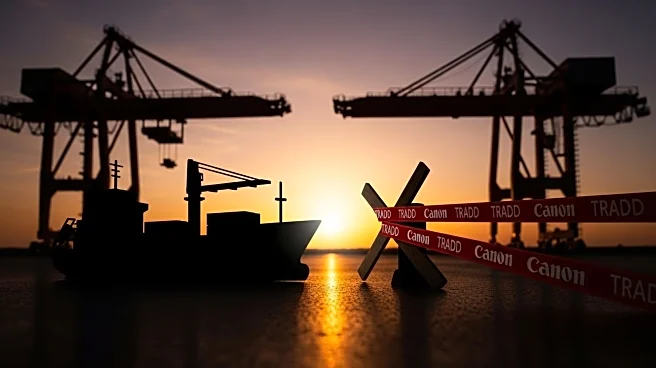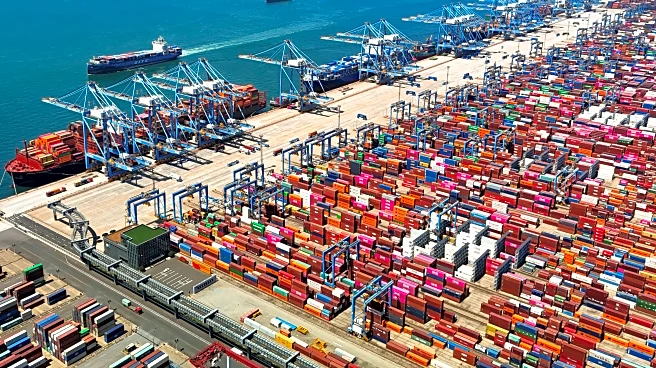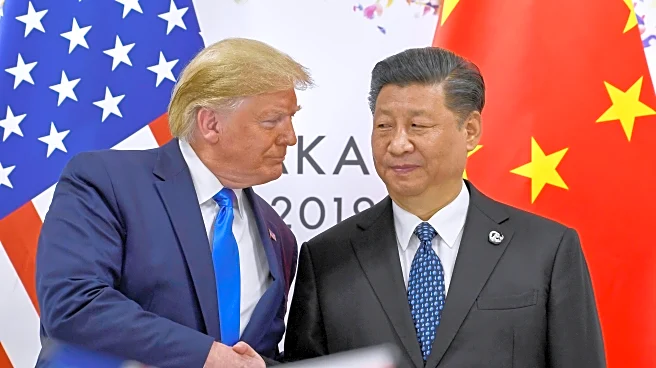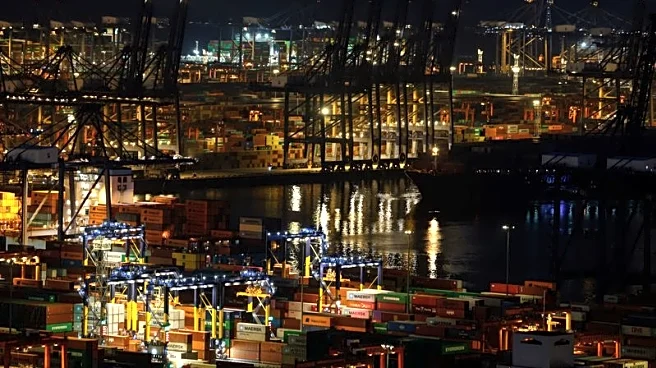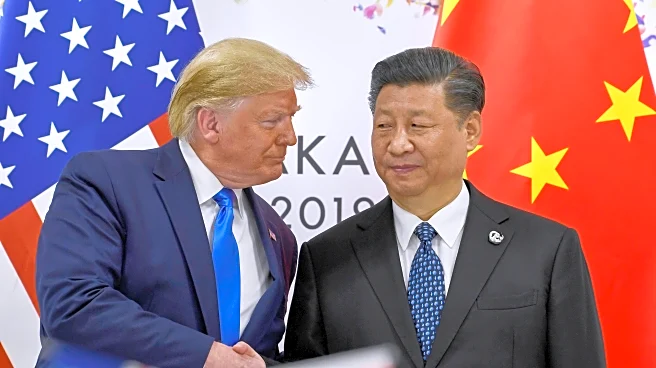What's Happening?
China has announced new port fees on U.S.-owned vessels docking in the country, as a retaliatory measure against planned U.S. port fees on Chinese ships. The fees, set at 400 yuan ($56) per net ton per voyage, will apply to vessels owned or operated by American companies, ships built in the U.S., or those flying the American flag. These fees will increase annually until 2028, reaching 1,120 yuan ($157) per net ton. The move comes ahead of trade talks between President Trump and Chinese leader Xi Jinping, scheduled to occur during the Asia-Pacific Economic Cooperation forum in South Korea. China's Ministry of Transport has labeled the U.S. port fees as discriminatory, claiming they damage China's shipping industry and undermine international trade order.
Why It's Important?
The imposition of port fees by China highlights the escalating trade tensions between the U.S. and China, potentially affecting global shipping and trade dynamics. The fees target U.S.-linked vessels, which could lead to increased operational costs for American shipping companies. This development may further strain U.S.-China relations, impacting negotiations and trade agreements. The broader implications could include shifts in shipping routes and strategies by companies to mitigate costs, potentially affecting global supply chains and trade flows.
What's Next?
The upcoming trade talks between President Trump and Xi Jinping will be crucial in determining the future of U.S.-China trade relations. Stakeholders in the shipping industry may need to adjust their strategies to accommodate the new fees, potentially seeking alternative routes or partners. The international community will be watching closely to see if these measures lead to a resolution or further escalation in trade disputes.
Beyond the Headlines
The introduction of these fees may have long-term implications for international trade norms and practices. It could set a precedent for other countries to impose similar retaliatory measures, affecting global trade stability. The situation also raises questions about the effectiveness of tariffs and fees as tools for negotiating trade agreements.

